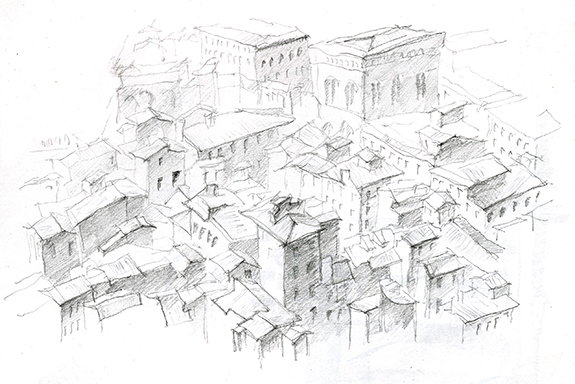In the 2009 movie “Up in the Air,” George Clooney’s character states, “Photos are for people who can’t remember.” I don’t entirely agree with this statement. I’m somewhat addicted to Instagram and enjoy looking to old pictures. However, Mr. Clooney’s quote raises an interesting point—how do we remember the places, people and events in our lives? Even further, how can we use these memories to enhance our sense of design? Personally, I find a sketchbook and a pencil cement my experiences remarkably well, leaving an overwhelming sense of connectivity to a time and place.

As designers, we are obligated to absorb our surrounding environment to improve our designs and quality of life. By means of pen or pencil, the documentation of an environment extends beyond a facade’s ornate detail or sequence of column bays within a church. The lines on the sketchbook are connected to our memory, thus permanently linking our consciousness to a location’s culture, people, sounds, smell, and even weather. In effect, we become nostalgic about our past through the pressure applied to a sheet of paper.

Alone, nostalgia is a wonderful keepsake. And while time inevitably moves forward, our hand-drafted retrospections form a “creative catalogue” when brainstorming the designs of the future. The transformation of our conceptualizations into real-word matter is directly influenced by the recollections gathered in our sketchbooks in the form of light, materials and scale. We are driven by our experiences to improve everyday occurrences.
When looking back on drawings from Rome and Havana, I become sentimental. I look back to the proportions and details of Roman architecture. I look back to the impromptu performance streetscapes created in the footprint of monuments by locals in Havana. I look back and I remember how and why I am molded by recording my environment. And as I look back at these moments, these recollections push me forward.

Joe Bevins graduated from the Stuckeman School of Architecture and Landscape Architecture at The Pennsylvania State University. He has worked on a diverse range of project typologies with significant interests in adaptive reuse and sustainability. Away from work, he enjoys being active with his wife and dog, cooking, and reading news and design articles.
